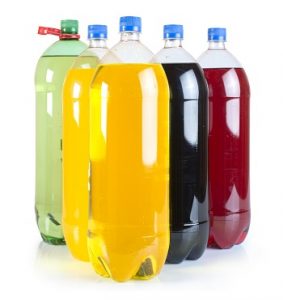
More evidence that low-calorie sweeteners are bad for your health
Studies show that artificial sweeteners can raise the risk of hypertension, metabolic syndrome, type 2 diabetes and heart disease, including stroke.

Natural Health News — Nanoparticles are becoming ubiquitous in food packaging, personal care products and are even being added to food directly. But the health and environmental effects of these tiny additives have remained largely unknown.
A new study now suggests that nanomaterials in food and drinks could interfere with digestive cells and lead to the release of the potentially harmful substances to the environment. The report on dietary supplement drinks containing nanoparticles was published in the journal ACS Sustainable Chemistry & Engineering.
Robert Reed and colleagues note that food and drink manufacturers use nanoparticles in and on their products for many reasons. In packaging, they can provide strength, control how much air gets in and out, and keep unwanted microbes at bay. As additives to food and drinks, they can prevent caking, deliver nutrients and prevent bacterial growth. But as nanoparticles increase in use, so do concerns over their health and environmental effects.
To make life more complicated for consumers, many labels do not list whether or not the product contains nanomaterials – and manufacturers almost never say whether their packaging contains these materials.
Harmful to the gut
Consumers might absorb some of these materials through their skin, and inhale and ingest them. What doesn’t get digested is passed in urine and feces to the sewage system. A handful of initial studies on nanomaterials suggest that they could be harmful, but Reed’s team wanted to take a closer look.
They tested the effects of eight commercial drinks containing nano-size metal or metal-like particles on human intestinal cells in the lab. The drinks changed the normal organization and decreased the number of microvilli, finger-like projections on the cells that help digest food.
In humans, if such an effect occurs as the drinks pass through the gastrointestinal tract, these materials could lead to poor digestion or diarrhoea, they say. The researchers’ analysis of sewage waste containing these particles suggests that much of the nanomaterials from these products are likely making their way back into surface water, where they could potentially cause health problems for aquatic life.
Who’s using nanomaterials?
In cosmetics you can usually tell if a product has nanomaterials by looking for the prefix ‘nano’ on the ingredients label. Food however can be a bit trickier.
Some of nanomaterials commonly found in food that have documented health risks include:
Although most consumers are unaware of it nanomateirals are being widely and quietly incorporated into foods we buy every day. A recent report by Friends of the Earth, Tiny Ingredients, Big Risks: Nanomaterials rapidly entering food and farming, has found a tenfold increase in nanofood products on the market since 2008.
The report details products currently on the market and known to contain (usually unlabelled) nanomaterials and the companies manufacturing them.
In all the report documents 85 food and beverage products on the market known to contain nanomaterials — including brand name products. These products include Nestle Original Coffee Creamer, Jet Puffed Marshmallows and Trix cereal as well as Philadelphia Cream Cheese, Lindt Milk Chocolate and Fiber One Cereal.
If you are concerned about nanomaterials we recommend you read the report and check out some of our previous stories on this topic (see panel left).

Please subscribe me to your newsletter mailing list. I have read the
privacy statement